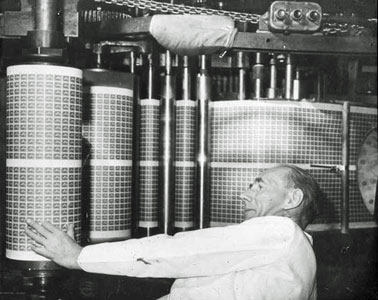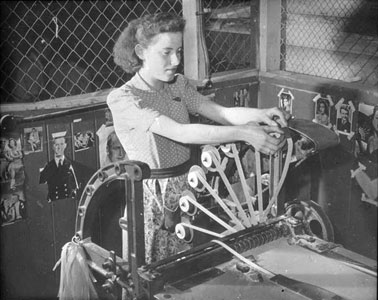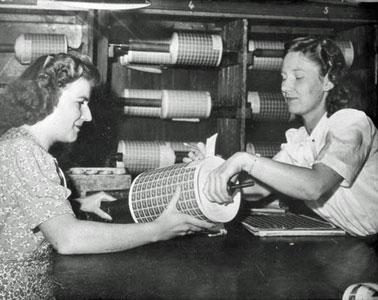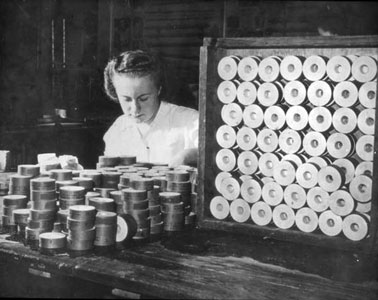
About this Website
This website describes The £sd Postage Stamps of Great Britain Issued in Rolls, which were issued from early in the 20th century until decimalisation in 1971. The site spans the combined periods of the three main reference works: Leslie Wilkinson (King George V), Langston & Corless (King George VI), and Douglas Myall (Queen Elizabeth II). Additional information is included from a variety of sources, see the bibliography.
As with other sites in the same series, emphasis has been placed on providing good quality colour images, and as many as possible.
About the Images
The images on this website are from scans, some of my own collection, but many have been supplied by other collectors and dealers, and some are taken from auction archives with permission from the auction houses. All are copyright, see the notice below.
Most images have been improved with Photoshop. They have been straightened, cropped, etc, and minor damage has been repaired. In some cases, where the source material is not available or of poor quality, images have been created. Such images are identified by the word “reconstruction”.
Thanks to the following collectors (in alphabetical order):
| Jean Alexander | Dave Cox | Jonathan Durley |
| Matthew Healey | Mike Jackson | Alan Musry |
| David Poynton | Peter Tanner | Tony Walker |
and also to the following for allowing use of their images:
Andrew G Lajer
Candlish McCleery Ltd
Grosvenor Philatelic Auctions
and to The Postal Museum. None of the images on this site are from The Postal Museum but their documents and records were of great help. These photographs are by courtesy of the Post Office:

Printing Stamps

Slitting and Reeling

Master Rolls

Checking and Packing
Collecting Rolls
Although complete rolls of some issues exist (it’s said there is a single known example of a complete Downey Head roll), most of us collect leaders with a few stamps attached. The number of stamps is often suggested as 3, 4, or 5, or if joins are to be shown, then more than 20. This isn’t useful advice as more often than not we have to take what’s on offer. Generally the more stamps the better, but most of my leaders have 1 to 5 stamps attached.
Folding for display can also be a challenge. Deegam recommends removing the wax seal before mounting for display. I completely disagree with this, and preserve the wax seal and ribbon whenever I can. Some collectors prefer to keep leaders unfolded, but this is a headache for mounting and display. When the leader allows, I fold vended leaders once to the left of the printer’s imprint so that the stamps, which are wound facing inwards, appear face upwards to the right:

Affixing machine leaders I fold twice (concertina style) so that the stamps, which are wound facing outwards, appear face upwards to the left:

Finding Wilding leaders is fairly easy, there’s always a good selection on eBay, but earlier leaders from the Kings are difficult. The dealers and auction house listed above are a good starting point, and then it’s simply a matter of patience, waiting for someone to sell.
Copyright Notice
This website and contents are copyright © 2015-2024, all rights reserved. Any use, redistribution, or reproduction for other than personal non-commercial reasons is prohibited. In addition, images from auction archives are protected by the copyright of the auction houses.
Let’s begin with a brief history …
The First Rolls
The idea of selling stamps via coin operated machines had been around since Victorian times. Various patents were filed throughout the second half of the 19th century, but generally the Post Office seemed to have been disinterested, leaving the early work to others.
The story of Post Office rolls begins on 15 June 1905 in Wellington, New Zealand when the first stamps were vended from a Dickie-Brown machine. Then a fortuitous meeting between Robert Dickie and Mrs Kermode led to trials in London in 1906, to the formation of the British Stamp and Ticket Automatic Delivery Co. Ltd, and then to the adoption of Kermode machines. By 1911 about a dozen Kermode machines were installed in Post Offices around the UK.

Several machines were trialed around this time using rolls of King Edward VII stamps: Kermode, Abel/BEAM, Rex, Kingsway, Wilkinson. Detail of these machines are given in an excellent series of articles by G. H. R. Homer-Wooff and P. J. Jones in the GB Journal vols 15 & 16 (1977). All rolls from this period were made by the various machine manufactures by joining strips of sheet stamps. There are few genuine examples known, and most should be viewed with caution.
About the same time, around 1910, stamp affixing machines were becoming a popular piece of office equipment, used as a labour saving device for applying stamps to large numbers of envelopes. The resulting pressure on the Post Office from both applications, affixing and vending, led to the first issue of Post Office rolls in 1912.
The British Philatelist [4(5)34] July 1911 said:
Stamps for Automatic Machines. Specimen rolls are being manufactured, and so soon as they are received enquiries will be made of firms who sell stamp-affixing machines as to which type will be most suitable. Some months must elapse before the rolls can be placed on sale. Both 1d. and ½d. stamps will be issued in rolls of two sizes, the larger one containing 1000 stamps and the smaller 500. As the manufacture will involve additional expense, it will be necessary to make a small extra charge of 2d. in excess of the face value for the larger rolls, and 1½d. for the smaller ones.
The handling charge was reduced to 1d for the smaller rolls before being issued in August 1912.

To continue reading about the first issue of Post Office rolls, click on the link below, or use the Navigation menu to select “Downey Head”.
Next: Downey Head